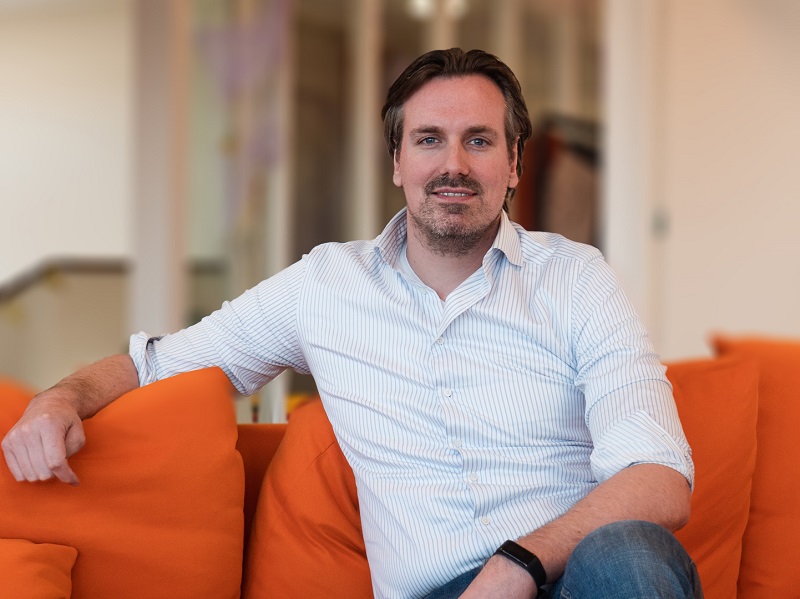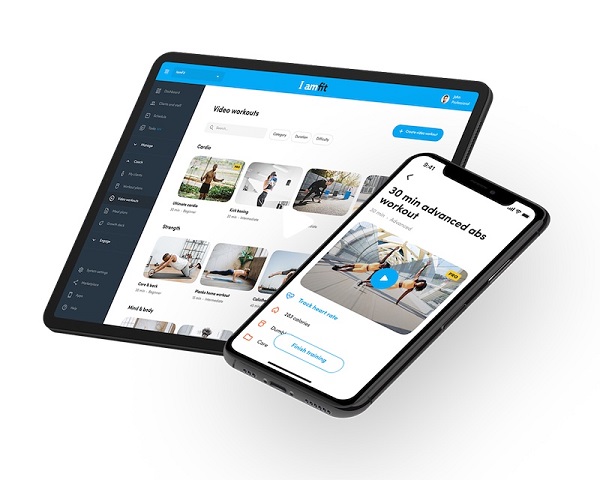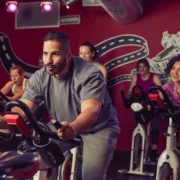CEO Corner: Hugo Braam, Co-Founder of Virtuagym, on Company’s Future Plans & Digital Fitness Industry

Hugo Braam founded Virtuagym in 2008 with his brother, Paul. Since its founding, Virtuagym has grown into one of the most significant fitness software providers, and continues to expand its offerings and customer bases.
Virtuagym is an all-in-one leading fitness technology provider for coaching, engagement, and management. Virtuagym was founded in 2008 and is based in the Netherlands, though its customers are across the globe. Through Virtuagym, businesses give their clients much-needed services, like virtual training, live workout videos, meditations, and more. Clients in return receive increased client loyalty and satisfaction. Hugo Braam spoke to Athletech News (ATN) about the industry, what differentiates Virtuagym from competitors, and the company’s plans for growth in North America.
ATN: What was your inspiration for founding Virtuagym, and what was the process like?

Hugo Braam: Our business has been around for quite some time. Virtuagym was initially founded by my brother Paul and myself in 2008 as a consumer app, before we launched it as one of the first B2B SaaS solutions in health and fitness coaching in 2013.
We quit very different jobs to set-up the business – we had no background in the fitness industry whatsoever. I initially started out as an intellectual property lawyer and Paul had a career in IT!
However, I was a fitness enthusiast and I’d noticed that whilst technology was really starting to make a change in how people were operating in other industries, it hadn’t been adopted much in fitness. The whole fitness product and experience was super linear, stuck in its ways and inaccessible. We realized there was a real opportunity to develop technology that could make a difference to help people live healthier, more active lives. The combination of Paul’s technical skills and my more natural creativity worked well, as we started to pull together different ideas.
The first version of Virtuagym was basically a consumer-oriented website providing personal training plans and nutrition coaching within a social environment. We were one of the first out there at the time but perhaps this meant we were almost too early with introducing a subscription based premium service. We had over 1 million users. However, in a pre-Spotify and Netflix era, consumers just weren’t really ready to pay a recurring subscription for a digital-only experience.
Therefore, in 2012 we began trialing ideas and asked ourselves, would this actually work better within the physical fitness industry? We tried a few things out with local clubs and decided to pivot completely to B2B. That ultimately has led us to having the great all-in-one platform for coaching, management and engagement that we have today for fitness and corporate health.
ATN: What has been your biggest challenge with Virtuagym, and how did you overcome it?
Hugo Braam: The biggest challenge for us was probably timing. At the beginning, I think we were too early for the consumer side of the fitness industry, but also the professional industry wasn’t easy. Many gyms were run by owners who weren’t digital natives, for whom using technology for coaching was a cool addition but not a must-have. We were asking people to run when they were still only beginning to walk.
Nevertheless, we were finally growing a customer base, making progress and in a position to start looking at how to evolve our product to the next level. It became clear that for broader adoption we needed to integrate with the member management systems of clubs. However, this market was really fragmented, with so many providers around at the time, often still offering outdated on-premise software.
Instead of integrating with dozens of different systems we decided to build our own solution. It was around this time that software was all going into the cloud and we started to create one of the first SaaS-based club management tools. This helped us to evolve from being a nice-to-have coaching technology provider, to offering an all-in-one solution comprising core business tools for scheduling, member management and billing. This has been a key ingredient to our success – offering fitness businesses the ability to have everything in one seamless solution continues to be extremely appealing.
ATN: What keeps you motivated?
Hugo Braam: First of all, having your own business is super motivating because you get up every day knowing you get to work on something you have helped create; your business is basically your baby. Ultimately, the best thing about Virtuagym is that it allows me to combine two of my biggest passions – exercise and technology.
I’m a real geek. I love everything around new technology developments, such as gaming innovations, wearables, other sensor-based innovations and of course augmented and virtual reality. I think it’s great to be able to translate new technological solutions into another domain that I’m also passionate about and to think about how we can motivate people to commit to sustainable lifestyle change, which I believe is the biggest challenge for our industry. I have a passion for building things, especially when there is the opportunity for people to regularly use them to improve their lives, contributing to our company’s mission of creating a healthier, happier world.
ATN: What do you think differentiates Virtuagym from competitors?

Hugo Braam: I think the core strength of our proposition is that over time we have been able to build a really comprehensive solution for customers, comprising coaching, engagement and management tools, all within one seamlessly integrated platform.
We’ve created what I believe to be the leading coaching and engagement solution in the market today. What’s more, whilst more of our competitors are moving into this coaching domain, this is something we’ve been doing for over 13 years. In this time, we’ve been strengthening, improving and polishing our product to continually enhance the user experience.
This is shown by the fact that our clients’ app ratings are always four and five stars. We now support over 9,000 customers across 80 countries worldwide, reaching millions of end-users.
ATN: What are your plans for the North America market?
Hugo Braam: Obviously North America is a large, relatively homogenous market. It is also a market full of exciting innovations and opportunities. Therefore, if we want to become one of the leading players globally, we are going to have to make real efforts to succeed in this market.
Currently we have over 1,000 locations using Virtuagym in the U.S., including some well-known brands such as Newtown Athletic Club, X-Sports and many YMCA clubs. We will keep investing in the market – not just from a marketing and sales perspective but from the product side – and we expect North America to become our biggest market within the next three to four years.
ATN: What do you think is the future of the overall fitness industry in the maybe next three-to-five years?
Hugo Braam: Over the past decades, not enormous amounts has changed in how we work out. People are still getting a membership to access a treadmill that they don’t really like running on, so in a way I believe the product of fitness is broken. Right now our industry is only addressing around 20% of the market with gym services, of which only around 15% are really intrinsically motivated by the sport itself. This means that there is a huge opportunity to serve the other 80% and help them improve their health.
However, if this is to happen, we need to keep working to create a better offering that can cater for the desires of these different demographics, developing more engaging and personalized experiences. I believe technology is the key to making this a reality.
In that sense, digitization is reinventing the product of fitness and diversifying the fitness offering. Fitness providers can leverage technology to deliver more personalized training experiences and tailored offerings to meet the specific needs of individuals and groups. Digital personal coaching, gamification through challenges and wearables are all examples of excellent tools that are already improving the member experience today. We envision that Virtuagym will continue to play a leading role in this digital transformation of our industry and we are focused on working on exciting new applications, which gets me excited to get to work every day.
ATN: How do Virtuagym’s recent investments speak to the company’s short- and long-term plans?
Hugo Braam: Ever since we started Virtuagym, we have been focused on being able to make a global impact with our technology – helping as many fitness and health businesses as we can and improving the lives of people around the world. Our recent investment of 3.5 million dollars was from a local investor who not only really believes in our current product, but also supports our future vision and ambitions moving forward. We’ll be using the funding to reignite our growth engine after being a bit underfunded during COVID-19.
We hope to raise a further round of funding in the near future, to pursue our target of becoming one of the go-to, premier global players in our industry. We’ll keep doing what we are doing whilst taking our products and services to an even higher level, all to support this goal of making a truly global impact towards creating a healthier, happier world.



